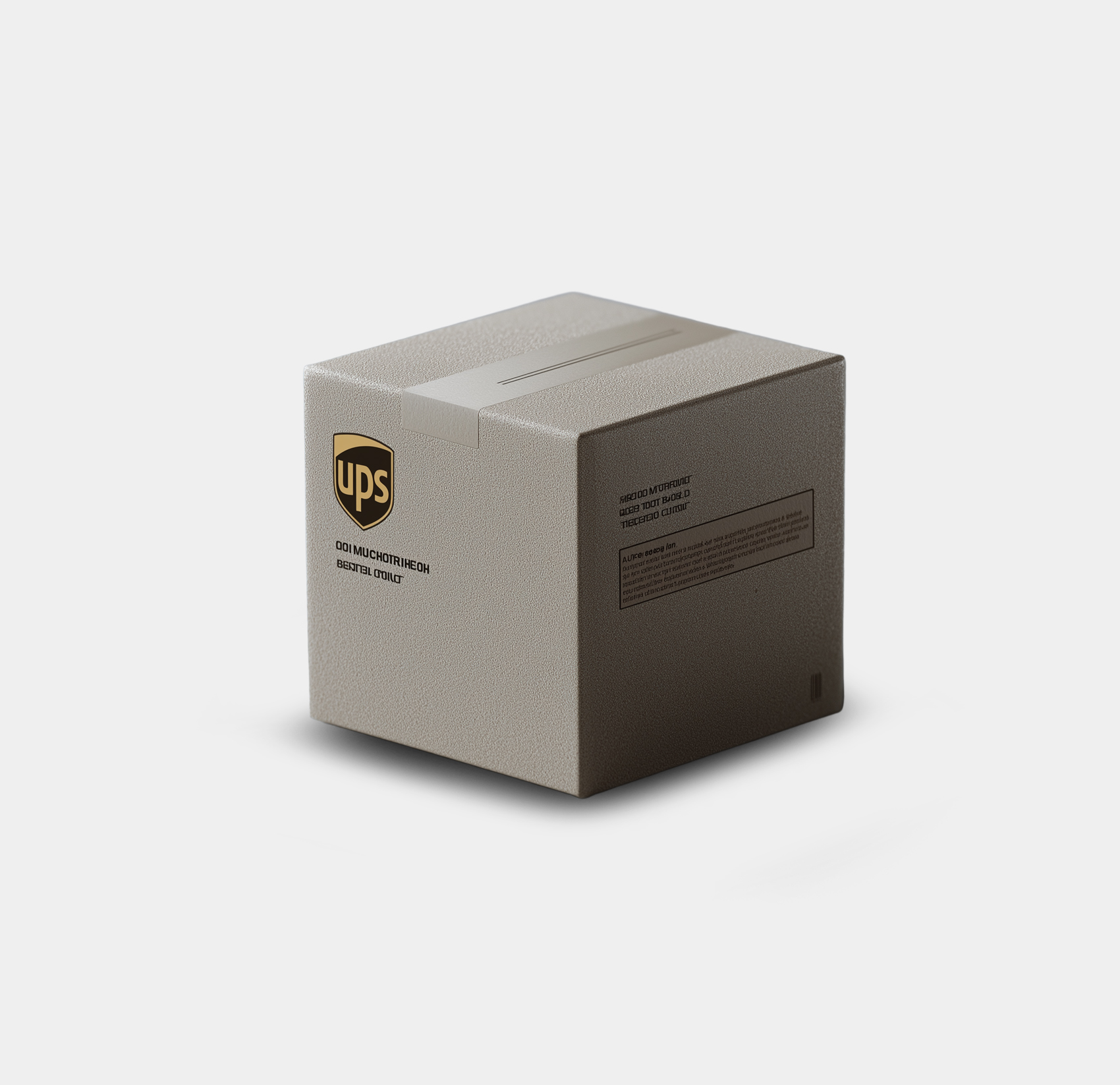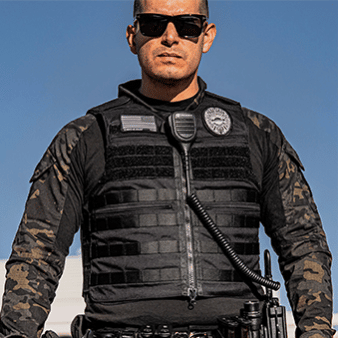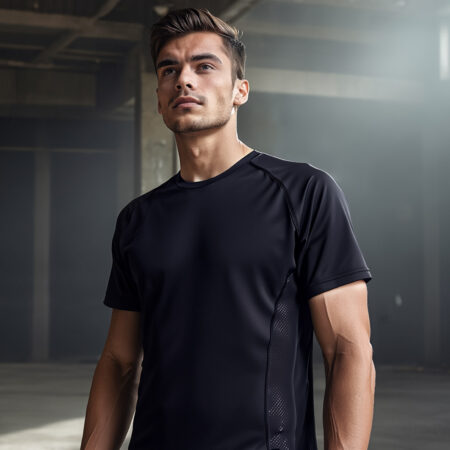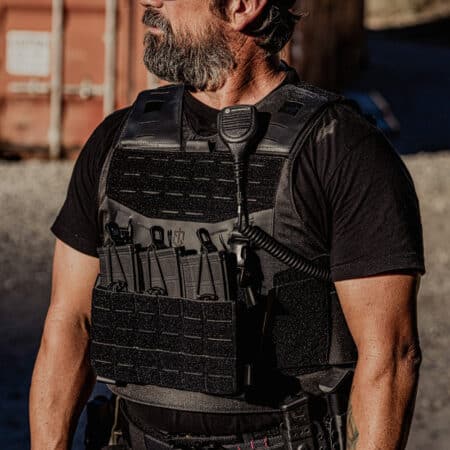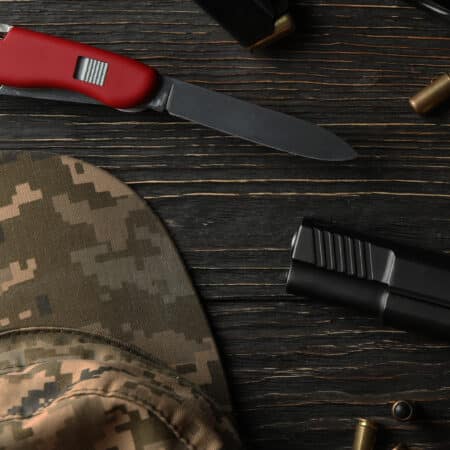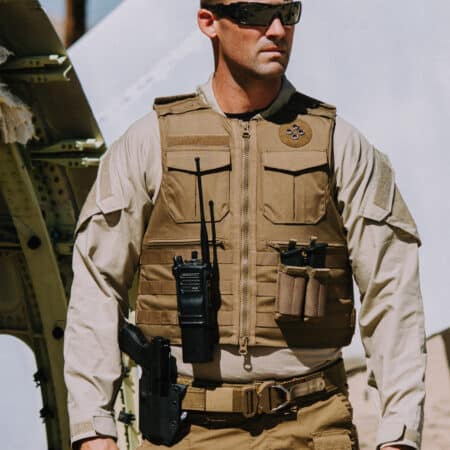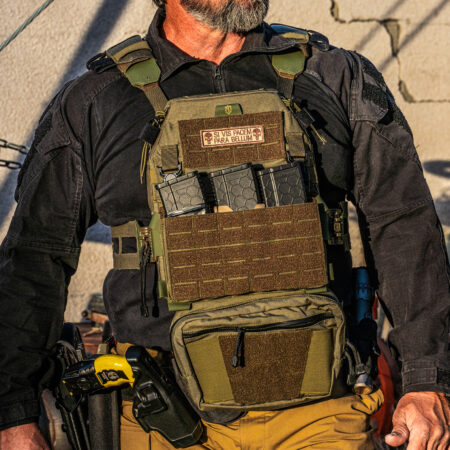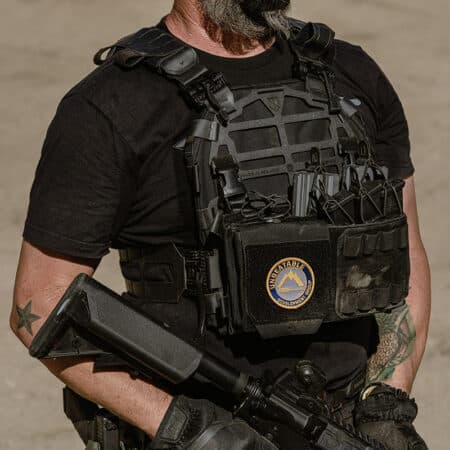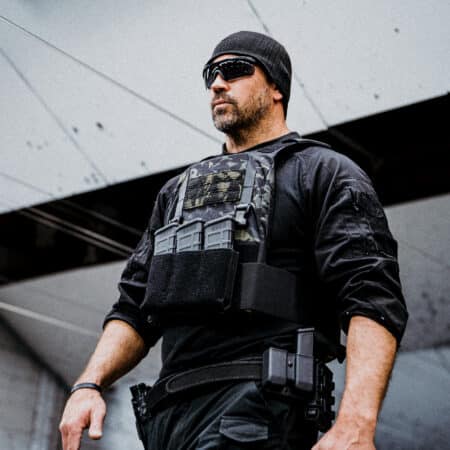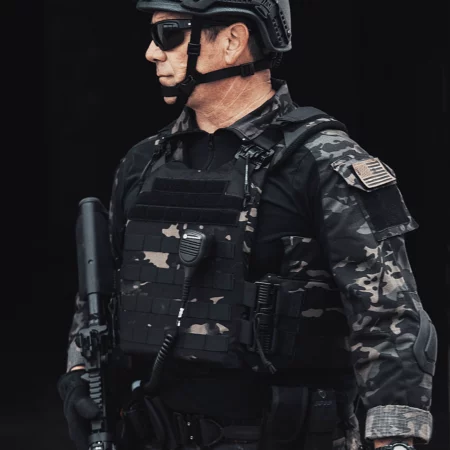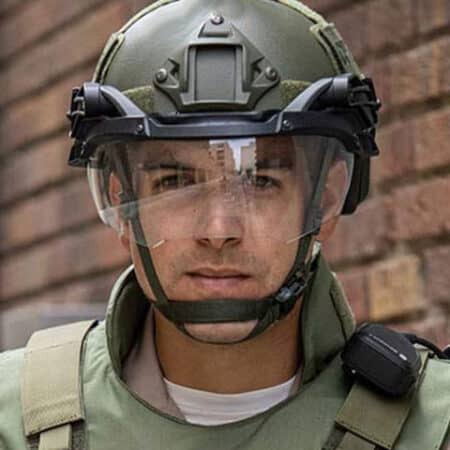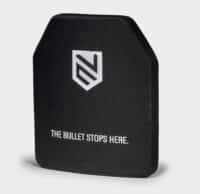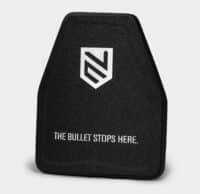
Level 3 Body Armor
Rifle-Rated Protection

Level of protection
Price
Sort by
ARMOR PLATES GUIDE
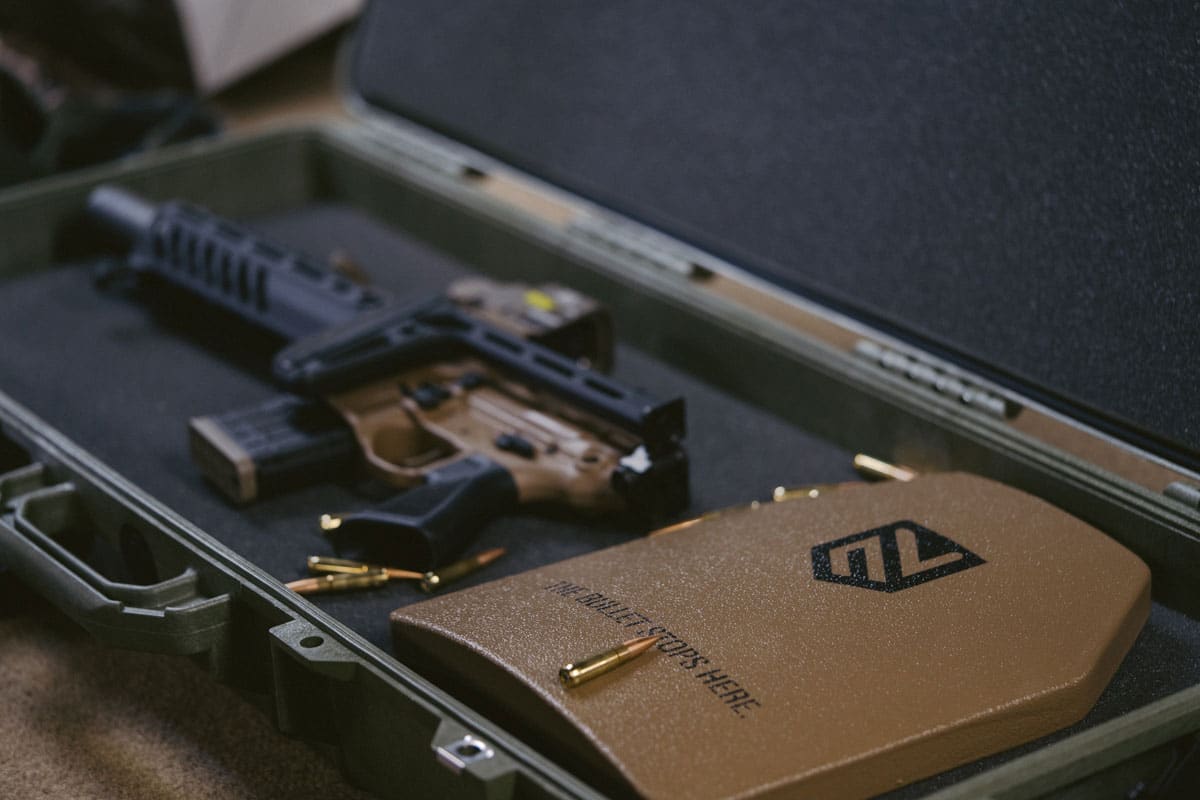
Choosing Body Armor
Civilians can legally own body armor in the US however, choosing the right body armor level can be quite challenging. There are different levels of body armor that are rated to stop different threat levels. In the USA, the National Institute of Justice (NIJ) sets the standards for body armor and currently you can get body armor level IIA, level II, level IIIA, level III body armor and Level IV armor.
NIJ Level IIa, II, and IIIA are soft armor inserts that are designed to stop pistol rounds, whereas Level III and IV are hard armor plates designed to stop rifle rounds. Still, Level IIIA armor is the most popularly used armor level in the US, by both civilians looking to wear body armor, and by professionals who need it for their jobs.
ARMOR PLATES LEVELS OF PROTECTION
The National Institute of Justice provides guidelines, specifications, and documentation on specific threat levels that both soft body armor and ballistic plates are tested and certified under. The ballistic classifications for hard plates are:
- Level IIIA Handgun protection up to .44 Magnum and 12 Gauge 1/2 oz. Slug threats
- Level III Hard armor plates protection up to .308 M80 Ball threats.
- Level III+ Ceramic Hard Armor protection up to 5.56mm M855 Green Tip special threats.
- Level IV Ceramic Hard Armor protection up to .30-06 APM2 armor piercing threats.
The NIJ conducts tests and evaluations in their facilities for any manufacturers of body armor that pays and submits armor plates to the NIJ Laboratory for certification. They are subjected to round after round of gunfire from controlled projectile guns with recorded velocity, measured points of impact, and backface deformation. They also go through a rigorous environmental conditioning process involving extensive testing and evaluation by the NIJ. More information on ballistic protection levels can be found here.
CERAMIC PLATE VS STEEL PLATE
Ceramic plates and steel plates are two common types of hard armor used in body armor and ballistic protection. Each has its own set of pros and cons, and the choice between them depends on the specific needs of the user. Here are the pros and cons:
Ceramic Plates:
Pros:
- Lightweight: Ceramic plates are much lighter than steel of similar protection levels. This makes them more comfortable to wear for extended periods and provides better mobility.
- High Ballistic Performance: Ceramic plates are highly effective at stopping high-velocity rifle rounds, including armor-piercing ammunition. They provide excellent protection against a wide range of threats.
- Multi-Hit Capability: Many ceramic plates are designed to withstand multiple hits without compromising their protective capabilities, although they may eventually degrade after multiple impacts.
- Reduced Backface Deformation: Ceramic plates often exhibit less backface deformation, which is the indentation or trauma caused to the wearer’s body when a bullet is stopped. This can reduce the risk of injury.
Cons:
- Fragility: Ceramic plates are more fragile, especially if they are subjected to rough handling or impacts. They can crack or shatter under certain conditions.
- Environmental Sensitivity: Some types of ceramic materials can be sensitive to moisture and environmental factors, which can degrade their performance over time if not properly cared for.
- Cost: High-quality ceramic plates can be more expensive
CERAMIC PLATE VS STEEL PLATE
Steel Plates:
Pros:
- Durability: Steel plates are known for their bomb-proof durability and resistance to wear and tear. They can withstand rough handling easily.
- Affordability: Steel plates are generally more affordable than ceramic plates of similar protection levels, making them accessible to a wider range of users.
- Multi-Hit Capability: Many steel plates are capable of stopping multiple rounds without degradation of the plate.
Cons:
- Heavier: Much heavier than ceramic plates of similar protection levels, which can lead to discomfort and a decrease in mobility.
- Backface Deformation: Often exhibit more significant backface deformation compared to ceramic plates, which can increase the risk of injury to the wearer.
- Less Effective Against Certain Rounds: May be less effective against very high-velocity or armor-piercing rounds.
- Spalling: Even with anti-spall coatings, steel armor is prone to cause shrapnel and fragmentation when stopping bullets. This can potentially cause injury or death to the wearer even if the threat was stopped.
In summary, ceramic plates are favored for their lightweight and high ballistic performance, making them suitable for military personnel and law enforcement officers where mobility is crucial. Steel armor plates, on the other hand, are known for their durability and affordability, making them a popular choice for civilian users. The choice between steel and ceramic plates should be based on the specific needs of the user, as well as the expected threats they may encounter.
HOW TO CHOOSE THE RIGHT BODY ARMOR PLATES FOR YOU?
In today’s world, personal safety gear is paramount and choosing the right body armor plates is a crucial aspect of ensuring protection in potentially dangerous situations. Conducting a thorough risk assessment is key to understanding the specific threats you might encounter and the level of protection required. Whether it’s the unpredictability of living in a big-city or the inherent dangers in certain professions, prioritizing your safety through appropriate body armor plates is essential to mitigate risks and make you feel safe when facing hazardous circumstances.
- Assess Your Environment: Consider the specific environment and locations where you will wear the body armor, whether it’s urban, rural, or in specific tactical situations.
- Occupation and Activities: Determine your profession and daily activities. Some jobs may require higher levels of protection, such as police officers or security personnel.
- Identify Common and Potential Threats: Evaluate the types of threats you are most likely to encounter such as firearms, sharp-edged weapons, or both. If firearms are a concern, consider what calibers you are most likely to face and want protection from.
- Level of Protection: Choose the appropriate level of protection based on the identified threats, considering armor levels like II, IIIA, III, and IV. For most circumstances and occupations, level 3a or level 3 is adequate.
- Comfort and Mobility: Balance protection with comfort and mobility, as you need to wear the armor comfortably for extended periods without restricting movement. Ensure the body armor plates fit your body properly, covering vital organs while allowing for ease of movement.
- Plate Material: Plates come in different materials like polyethylene armor, ceramic, or steel. Consider factors like weight, threat level, and durability.
- Budget: Determine your budget and find the best-quality body armor that fits within your financial means.
- Local Laws and Regulations: Familiarize yourself with the laws and regulations governing body armor possession and usage in your area.
- Warranty and Maintenance: Understand the warranty and maintenance requirements of your chosen body armor to ensure its long-term effectiveness.
By conducting a thorough risk assessment and considering these factors, you can make an informed decision when choosing the right body armor plates for your specific needs.
WHAT SIZE ARMOR PLATES DO I NEED?
Sizing a plate carrier vest is quite similar to a simple bulletproof vest. A bulletproof vest typically is sized similarly to your normal clothes, however for sizing hard ballistic panels, you also need to consider the coverage they provide of your vitals.
Typically, armor plates follow SAPI specifications and come in four sizes, small, medium, large, and extra-large. For most of the population, whether male or female, a medium armor plate provides the correct protection of vital organs. Only rather small or large individuals should consider other plate sizes. There are some sizes in between as well, but they usually have a very minor difference in size.
Small ballistic panels are 8.75×11.75 or 8×10 inches in size and are ideal for women or men with smaller frames. Medium plates are 9.5×12.5 or 10×12″ inches and are suitable for most males with an average height and stature. Extra Large plates are 11×14″ inches.
The width of your body armor plate should be just inside your nipples side to side. Vertically, it should cover your torso from the top of the breastbone down to a couple of inches above the belly button. This ensures that all of your vitals are covered by body armor.
Keep in mind that plate carriers are also sized according to the size of the plates they carry, rather than the size of the person.
DIFFERENCE BETWEEN MULTI-CURVE AND SINGLE CURVE RIFLE PLATES
Multi-curve and single-curve rifle plates refer to the shape or curvature of hard armor plates used in body armor. The primary difference between them lies in how they are contoured to fit the human body. Here’s an explanation of each type:
Single-Curve Rifle Plates:
- Shape: Single-curve plates are flat and typically have a single curvature. They are shaped to fit the front or back of the torso and do not conform as closely to the natural curve of the chest and back.
- Comfort: While single-curve plates are more comfortable than flat plates because they are contoured to some extent, they may not conform perfectly to the wearer’s body, leading to potential gaps or discomfort, especially during extended wear.
- Cheaper: Single-curve plates are often less expensive and can be more versatile.
Multi-Curve Rifle Plates:
- Shape: Multi-curve plates have multiple curvatures designed to match the contours of the human torso more closely. They typically have curves along both the horizontal and vertical axes, which allows them to conform better to the chest and back.
- Comfort: Multi-curve plates are generally more comfortable to wear for extended periods because they distribute the weight and shape of the plate more evenly across the body. This close fit reduces the risk of discomfort, chafing, and gaps.
- Improved Coverage: The multi-curve design can provide better coverage and protection because it hugs the body’s natural shape more closely, reducing the likelihood of missed shots due to gaps.
- Increased Cost: Multi-curve plates are often more expensive than single-curve plates due to the added complexity in their manufacturing.
In summary, the primary difference between multi-curve and single-curve rifle plates is the level of contouring or curvature. Multi-curve plates provide a better fit, improved comfort, and potentially enhanced protection, but they are generally more expensive. Single-curve plates are simpler and more affordable but may not offer the same level of comfort or coverage. The choice between them depends on the wearer’s priorities, budget, and intended use. For maximum comfort and protection, multi-curve plates are often preferred, especially in professional or military applications.
WHAT IS SWIMMERS CUT VS. SAPI CUT?
“Swimmers cut” and “SAPI cut” are terms used to describe different shapes and cut of body armor plates, particularly the shape of the plate’s top corners.
Swimmers Cut: Swimmers cut plates are characterized by its rounded, contoured, or reduced upper corners. The rounded corners reduce interference and friction against the arms and shoulders, making it easier for the wearer to move in a natural swimming motion. The extra movement and flexibility can be beneficial in many different situations that require a wide range of arm movement. These plates are often preferred by individuals who need to maintain a high level of mobility, such as operators in maritime environments.
SAPI Cut: SAPI cut is the profile of the SAPI/ESAPI(Small Arms Protective Insert) armor used by the US military. This is the most common cut and profile that is used today. This design is more focused on providing maximum coverage of the chest and torso area while still providing movement where possible. It features angled or “cut” upper corners that can accommodate the stock of a rifle or shotgun comfortably.
Both swimmers cut and SAPI cut plates are designed with specific use cases in mind, and the choice between the two depends on the wearer’s intended activities and needs. When selecting body armor plates, it’s important to consider your specific operational needs and preferences to ensure you choose the right design for your intended use.
PLATE CARRIER SETUP
Plate carrier setup is completely up to the individual and the task or mission they are preparing for. Some plate carrier vests come equipped with load-bearing surfaces like MOLLE/PALS webbing and the ability to add side plates which provides better ballistic coverage. This gives the user the option to add any modular pouches for needed equipment like extra magazines, handcuffs, and other administrative gear. For example, A security individual wearing a plate carrier might need a baton or pepper spray pouch while a SWAT officer needs things like extra ammunition and medical. Here are some examples of different plate carrier setups:
CIVILIAN PLATE CARRIER SETUP
A CIVILIAN plate carrier setup is a tactical plate carrier vest adapted for civilian use, typically designed for personal protection, emergency readiness, or outdoor activities. Unlike military or law enforcement configurations, civilian plate carriers often prioritize comfort and mobility over combat-specific features. They can accommodate either soft armor panels or ballistic plates for protection against rifle rounds. Some plate carriers are slick with no webbing while others have MOLLE allowing the user to customize the setup with various pouches or accessories, making it suitable for different activities and scenarios. Civilian setups may include pouches for carrying first aid supplies, water bottles, communication devices, or tools, tailored to the user’s specific needs. This versatile and modular design provides civilians with a means to enhance personal safety and readiness while participating in various outdoor or preparedness activities.
MILITARY PLATE CARRIER SETUP
A MILITARY plate carrier setup is a specialized and highly configurable tactical plate carrier designed for military personnel engaged in combat operations. These plate carriers are constructed to withstand extreme conditions while providing essential protection and load-bearing capabilities. They feature MOLLE webbing for attaching mission-specific pouches and tactical gear, allowing soldiers to customize their loadout to suit their role and mission requirements. The core of the setup includes ballistic plates, at least six magazines, hydration, and communication equipment. Military plate carriers often incorporate features like quick-release mechanisms for emergency doffing, drag handles, cable routing, and compatibility with extra body armor components like throat and groin protectors. This setup offers a crucial balance between protection, mobility, and operational efficiency, ensuring that military personnel can effectively perform their duties in hostile environments while staying well-equipped and secure.
LAW ENFORCEMENT PLATE CARRIER SETUP
A LAW ENFORCEMENT plate carrier setup is a specialized tactical vest designed for police and law enforcement officers to enhance their operational effectiveness and safety. This configuration typically features a rugged and comfortable plate carrier vest with MOLLE webbing for attaching mission-specific equipment. a law enforcement officer may opt for soft armor panels or hard ballistic plates to provide protection against gunfire and other threats. The setup includes pouches and holsters for carrying essential equipment such as extra magazines, handcuffs, radios, flashlights, and less-lethal tools like pepper spray or tasers. Additionally, it can incorporate identification patches and badges for clear officer recognition and authority. This setup offers a balance between protection, mobility, and accessibility, allowing officers to respond to a wide range of law enforcement scenarios effectively while ensuring their safety in the line of duty.
MEDIC PLATE CARRIER SETUP
A MEDIC plate carrier setup is a specialized plate carrier designed for medical personnel operating in high-risk environments. It features a modular design with MOLLE webbing for attaching various medical pouches and gear. The primary focus is on carrying essential medical supplies such as bandages, tourniquets, gauze, chest seals, airway management tools, and etc. These supplies are organized for quick access, often including an Individual First Aid Kit (IFAK) for immediate care. The plate carrier may also include ballistic plates for protection, hydration systems, communication gear, and utility tools like shears. With clear identification patches and a balance of ballistic coverage and medical equipment, this setup allows medics/EMS to provide critical care in dangerous situations while maintaining mobility and protection.
CAN PLATE ARMOR STOP A BULLET?
A properly designed and manufactured armor plate can stop a bullet. In fact, modern armor stops bullets better than at any time in the distant past, due to improved design methods. Modern ceramic armor plates are capable of stopping multiple rifle threats: from 7.62×51 M80 to even rounds as powerful as .30-06 APM2.
When looking for body armor, it’s important to understand that there are many different levels of protection. All armor is designed around the concept of defeating a certain level and type(s) of threat. Armor can protect against rifle rounds, pistol rounds or shotgun shells, but no one armor protects against every single threat. For instance, the standard 5.56x45mm Level III+ Multicurve ceramic plate protects well against most .223 (5.56x45mm) threats up to M855 ball ammunition; however it does not resist the more powerful APM2 projectile.
Be sure to know what your armor can protect you from by verifying its threat level and specifications.
HOW MUCH DO ARMOR PLATES WEIGH?
Body armor plates- designed for inserting into plate carriers or the front and back plate pockets of a body armor tactical vest, can weigh up to 10 lbs. each depending on what they are made of. Steel armor plates are amongst the heaviest body armor plates one can wear- and plates almost always come in pairs to wear inside a carrier, making the armor system weight twice as much when worn as a set. Alternatives to wearing heavy and bulky steel armor plates come in the form of more common Polyethylene or ceramic plates. These plates are considerably lower in weight inside a plate carrier and can weigh as light as 3.5 lbs. for Level 3 Stand Alone (used without a soft-armor backing), to 6.0 lbs. in weight for Level IV Stand Alone Ceramic Armor Piercing protection. Handgun-rated Level IIIA Hard Plates can be even thinner and lighter at 1 and 1/2 lbs. per 1/4″ thin plate; resulting in less fatigue and mobility, and its inherent anti-stab qualities due to its Level IIIA hard armor plate configuration.
WHAT DOES NIJ CERTIFICATION OR NIJ LISTED MEAN?
NIJ certified refers to products that meet and pass the Compliance Testing Program (CTP) set by the National Institute of Justice (NIJ). The NIJ, under the U.S. Department of Justice, is responsible for establishing and maintaining standards for various aspects of law enforcement equipment, like body armor.
When a product is NIJ certified, it means that it has undergone extensive lab testing and evaluation to meet the specific performance and safety standards set by the NIJ. All NIJ certified products are on the Compliant Products List (CPL). The NIJ has established different levels, such as Level IIIA, Level III, and Level IV, each indicating levels of protection against different ballistic threats. Products are not certified if they are not on the Compliant Products List.
The NIJ compliance standards help ensure that law enforcement and security personnel are provided with reliable and effective equipment that meets consistent safety and performance criteria.
WHAT DOES NIJ RATED OR NIJ TESTED MEAN?
When a product is described as “NIJ tested” or “rated” it means that the product has not gone through the NIJ Compliance Testing Program and is not listed as compliant or certified. NIJ tested means independently tested by a 3rd party lab to meet or exceed NIJ standards. You will not find these products on the NIJ CPL.
Both NIJ-certified and NIJ-tested products are designed to meet the established standards of the National Institute of Justice, the key difference lies in the level of scrutiny and verification involved. NIJ-tested products are designed to meet the standards, while NIJ-certified products have undergone official NIJ testing and evaluation to confirm their adherence to those standards.
WILL AK-47 PENETRATE BODY ARMOR PLATES?
A Kalashnikov AK-47 typically will fire the 7.62 round bullet from its 16-inch barrel, but the 7.62mm bullet is also available in different casings, lengths, and projectile diameters- some holding more gunpowder to propel it with different velocities.
Lower rating plates like Hard Armor Plate Level IIIA won’t stop any rifle rounds. Some NIJ Level III Stand Alone Body Armor Plates are the lowest hard plate rating that can stop 7.62×39 type AK rounds, however, we recommend wearing Level III+ Special Threat Armor plates to stop the higher velocity 7.62×51, but not the higher case pressure properties of the 7.62x54R. Those would take a Level IV Plate for what the 54R round yields in velocity and energy.
WILL .30-06 PENETRATE AN ARMOR PLATE?
A .30-06 cartridge is a high-powered rifle round known for its significant penetration capabilities. To stop a .30-06 round, you would typically need ballistic body armor that is rated at a minimum of NIJ Level IV.
NIJ Level IV: NIJ Level 4 body armor is designed to stop armor-piercing rifle rounds, including those like the .30-06 with armor-piercing capabilities. This level of armor should provide reliable protection against most .30-06 ammunition.
It’s important to understand that the specific performance of armor can vary depending on factors like the design and quality of the armor plates. If you require protection against .30-06 ammunition or other high-powered rifle threats, it’s crucial to consult with a reputable armor manufacturer or specialist who can provide you with level IV body armor specifically designed to withstand these threats and can offer guidance on the best options for your needs.
DO ARMOR PLATES EXPIRE?
Armor plates, especially those made from ceramic materials, do have a recommend expiration date or service life. However, their effectiveness and lifespan can be influenced by various factors, and they may need to be replaced or reevaluated earlier under certain conditions:
- Wear and Tear: Over time, armor plates can experience wear and tear, especially if they are used regularly. This can result from impacts, stress, and environmental factors. Inspect armor plates regularly for cracks, delamination, or other signs of damage. Damaged plates should be replaced.
- Exposure to Moisture: Moisture can degrade some types of armor plates, particularly those with sensitive materials like ceramic. It’s important to store and maintain armor plates in a dry environment to prevent moisture damage.
- Extreme Temperatures: Extreme temperature fluctuations can affect the integrity of armor plates, especially if they experience rapid heating or cooling. It’s essential to follow manufacturer recommendations for storage and use within specified temperature ranges.
- Expiration Dates on Coatings: Some armor plates have protective coatings that may have expiration dates. It’s important to check these dates and follow the manufacturer’s guidance for reapplying or replacing coatings as needed.
- Impact History: Repeated impacts or drops can degrade the performance of armor plates over time. It’s advisable to replace armor plates that have been subjected to multiple impacts.
- Obsolescence: As technology advances, armor materials and designs can become outdated. While older armor plates may still provide some level of protection, they may not be as effective against modern ballistic threats. Consider upgrading to newer, more advanced plates if your current armor is outdated.
- Manufacturer Recommendations: Always follow the manufacturer’s recommendations for the maintenance and lifespan of your specific armor plates. They may provide guidelines for inspection, replacement intervals, and other important information.
In summary, armor plates do have a service life, but their effectiveness can be influenced by various factors. Regular inspection, proper storage, and adherence to manufacturer recommendations are essential to ensure the ongoing reliability of armor plates for personal protection or professional use. When in doubt, consult with the manufacturer or a qualified specialist for guidance on the maintenance and replacement of armor plates.
WHERE TO BUY ARMOR PLATES?
For those not familiar with the industry already: the body armor market has taken the online retail medium by storm. There are countless body armor dealerships, manufacturers, and distributors online- across the nation and back. Purchasing either soft armor panels or hard ballistic plates in several profiles including shooters cut or swimmers cut has never been so quick or easy. Be sure to check your state laws as states like Connecticut require body armor sales in person.
With the advent of social media, consumers have been able to educate themselves on which body armor package they feel works best for their needs to protect themselves and others. Such profound levels of information has educated the masses and has encouraged shoppers to buy online for the simple convenience of choosing the armor, purchasing online, then having premier body armor delivered- all from the comfort of home.
Check out our website here at Ace Link Armor for plates, plate carriers, soft body armor, and other tactical equipment.
Know more about Armor Plates
WHY ARMOR PLATES?
Do you want to feel safe while on duty? You’re not alone. In today’s world, crime rates are skyrocketing and the likelihood of an emergency happening is increasing too. Thankfully there are body armor inserts that provide a level of protection for almost anyone who needs it!
Whether you work in law enforcement, military service or just preparing yourself with high-quality plates to be extra cautious during your time outside; having durable plate carriers or bulletproof vests makes all the difference when guarding against any type of attack from weaponry such as guns and knives which can often come at unpredictable times.
Is it illegal to wear body armor in public?
It’s true that while wearing body armor may not be popular in every state, it is legal for citizens to own and wear them throughout the continental United States. Body armor can be worn in public anywhere the local or State laws- or law enforcement- does not prohibit it from being owned or worn. As a general rule, it is best to check with your local law enforcement or State Laws on owning and wearing soft body armor or body armor plates.
If you are a member of the armed forces, sworn law enforcement (including patrol that respond to tactical situations), or government agents, you are still subject to your branch or agency’s policies and requirements when purchasing, owning, wearing, and transporting body armor while active, reserve, on or off-duty. You can read more about that in our blog post here.
Can civilians own body armor?
The short answer is yes, civilians can own and possess body armor as long as it is not prohibited in their State of residence or by Law Enforcement, or Judicial decision.
Bulletproof vests and other types of body armor are essential for protection when in dangerous situations. If you want to buy one, be sure that your local regulatory authorities will allow it as they may have strict laws about what type can be worn or purchased depending on the location.
Some states have restrictions on what is considered body armor, so it’s important to be aware of the law in your area before ordering a carrier vest online or over the phone.
 go back
go back
YOUR SHOPPING CART
your cart is empty
